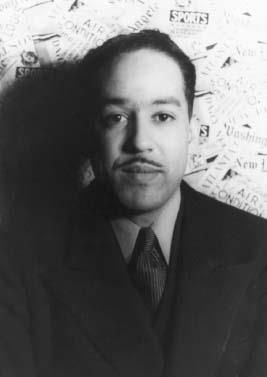LiteratureLiterature of the Harlem Renaissance Era |
Who were the literary artists of the Harlem Renaissance? |
Important writers of this era include Countee Cullen, Jessie Redmon Fauset, Langston Hughes, Zora Neale Hurston, Nella Larsen, and Claude McKay. They were the younger literary artists of the time, and older writers, established writers, critics, and editors encouraged them to produce.
Author, educator, and editor Jessie Redmon Fauset (1882–1961), came from a family with a strong commitment to racial uplift. She graduated from Cornell University in 1905, held membership in the prestigious honor society Phi Beta Kappa, and was the first black woman to graduate from that university. After receiving her master’s degree from the University of Pennsylvania in 1919, she spent several years as a teacher. Fauset was a key figure during the Harlem Renaissance and is often referred to as “the Mother of the Harlem Renaissance.” While editor of The Crisis magazine from 1919 to 1927, she supported the careers of many young artists, including Zora Neale Hurston and Langston Hughes. Fauset wrote her first novel, There is Confusion, in 1924. She left The Crisis in 1927 and established a literary career by publishing novels Plum Bun (1929), The Chinaberry Tree (1931), and Comedy American Style (1933). Her works focused on the racism and sexism that black women confronted, while educating her audience about the abilities of blacks and the opportunities that African Americans should have received. She returned to teaching in her later years.
Langston Hughes (1902–1967), poet, novelist and playwright, was born in Joplin, Missouri, and moved to Cleveland when he was fourteen. He spent a year in Mexico and then studied at Columbia University. He roamed the world as a seaman, wrote poetry during his travels, and returned to the United States. While attending Lincoln University in Pennsylvania, Hughes won the Bynner Prize for undergraduate poetry. He received the Harmon Award in 1930 and a Guggenheim Fellowship in 1935, which enabled him to travel to Russia and Spain. Hughes’s prose works include Not Without Laughter (1930), a novel The Big Sea (1940), and his autobiography I Wonder as I Wander (1956). His collections of poetry include The Weary Blues (1926), The Dream Keeper (1932), Shakespeare in Harlem (1942), Fields of Wonder (1947), and Selected Poems (1959). Hughes was an accomplished song lyricist, librettist, and columnist for the Chicago Defender. Through his columns, he created Jesse B. Simple, a Harlem character who saw life on the musical stage in Simply Heavenly. Hughes edited several anthologies published in the 1960s, and his play Mulatto was produced on Broadway in the 1930s.
Novelist Nella Larsen (1891–1964), was born in Chicago and attended the high school program at Fisk University. In 1915 she received a nursing degree from the Lincoln School of Nurses in New York City. Although she worked in nursing, her interest in writing never waned. In the 1920s she became immersed in the literary and political activities of the times. She is best known for two novels, Quicksand (1928), which won her a bronze medal from the Harmon Foundation, and Passing (1929), for which she received a Guggenheim Fellowship in creative writing in 1930. Larsen’s work focused on black women’s sexuality and the social expectations of women of color, particularly those who were of mixed race as she was.
Poet and novelist Claude McKay (1889–1948) was born in Jamaica (then British West Indies). He began writing at an early age. Two books of his poems, Songs of Jamaica and Constab Ballads, were published just after he turned twenty; they include extensive use of Jamaican dialect. McKay moved to America in 1913 to study at Tuskegee Institute (now University) and at Kansas State University. His interest in poetry prompted him to relocate to New York City, where he published his work in small literary magazines. He visited England and, while there, completed a collection of lyrics, Spring in New Hampshire. In 1922 he completed Harlem Shadows, a landmark work of the Harlem Renaissance. McKay turned to the writing of novels, and produced Home to Harlem (1928), Banjo (1929), and four other books, including an autobiography and a study of Harlem. He wrote his famous poem, “If We Must Die,” to assail lynchings and mob violence in the South. His Selected Poems (1948) was published posthumously in 1953.

A gifted novelist, playwright, poet, and columnist, Langston Hughes was a leader in the Harlem Renaissance frequently noted for his innovative jazz poetry.
